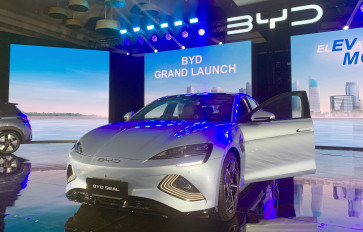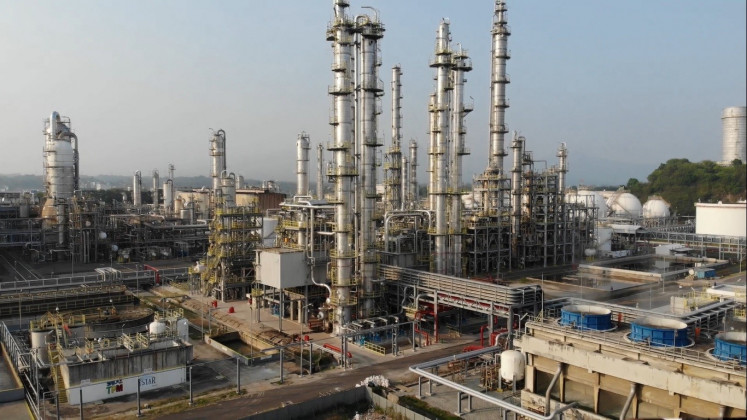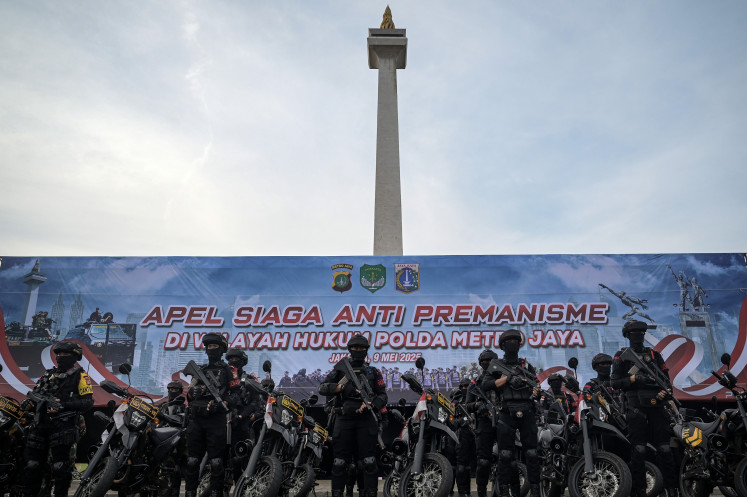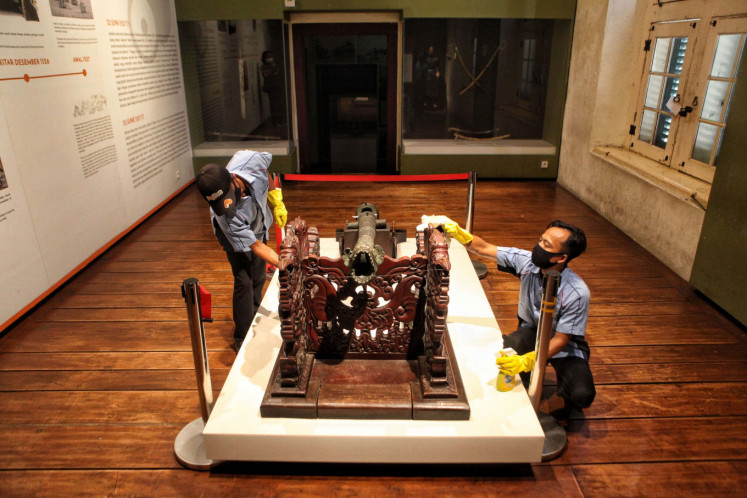Penta Gas Sistems sets sights on small-scale LNG projects
Penta Gas Sistems president director Pedro Nemalceff spoke to The Jakarta Post’s Divya Karyza about the country’s LNG distribution infrastructure issues and the firm’s plans in the sector.
Change text size
Gift Premium Articles
to Anyone

I
ndonesia has some 10,000 potential sources of liquefied natural gas (LNG) scattered across the country, many of them quite small. However, the country’s gas infrastructure has a ways to go before it can take advantage of more modestly sized reserves. Penta Gas Sistems president director Pedro Nemalceff spoke to The Jakarta Post’s Divya Karyza about the country’s LNG distribution infrastructure problems and the firm’s plans in the sector.
Question: How would you describe the current situation with regard to LNG distribution infrastructure development in Indonesia?
Answer: There has yet to be a significant development considering LNG production mainly takes place in a few locations with large gas reserves. When people think of LNG, they mostly think of large-scale projects with large gas reserves and large investments. While in reality, we have a lot of untapped smaller gas reserves. It is possible to perform LNG liquefaction from flared gas and stranded gas fields.
Gas flaring is a practice of burning natural gas associated with oil extraction. The gas is lifted from below the surface with oil during the process of making liquefied oil, so the gas is burned because the volume is too small. So how do we deal with this? This is actually a big problem in Indonesia because we have many flared gas spots.
Stranded gas fields, on the other hand, are natural gas fields that have been discovered but remain unusable for either physical or economic reasons. In most cases, according to my observations, these fields have very small reserves, located away from gas pipes and away from consumers. So transporting gas from these fields are difficult.
That’s why Penta Gas Sistems is working with Argentinian technology company Galileo to develop these small-scale LNG projects because the country has the market size and a promising small-scale LNG source potential.
We offer the Nano LNG technology for cleaning and liquefying flare gas for very small volumes. We bring the portable Nano LNG technology so it can be relocated from one field to another easily.
We produce a small volume of LNG and transport LNG using trucks to consumers, who usually use LNG to replace liquefied petroleum gas (LPG) and diesel fuel commonly known as “solar”.
How big is the small-scale LNG potential in Indonesia?
Referring to the data from the market, there are 10,000 small-scale gas spots in Indonesia. But for more precise data, we can check the data provided by the Energy and Mineral Resources Ministry or the Upstream Oil and Gas Special Regulatory Taskforce (SKK Migas). But bear in mind that their data may not be completely accurate because there are many flared gas sources that are not yet included in the list.
How much cheaper would LNG sourced from smaller reserves be compared to LNG sourced from large reserves?
It is possible that LNG sourced from smaller reserves would be cheaper compared to LNG sourced from large reserves. For instance, LNG sourced from a large reserve in Bontang, East Kalimantan, is sold at around 11.5 percent of the Indonesian Crude Price (ICP).
For example, if ICP is at US$80 per barrel, the LNG price there would be around $9 per million British thermal units (mmbtu). Then, we need to consider logistics costs. Eventually, consumers need to pay an average of $20 per mmbtu.
Using the Nano LNG technology on smaller gas reserves would be cheaper than that because the gas we process from flared gas and stranded gas fields has no value due to its very small volume. Thus, we have to look at the situation and conditions, case by case. If there's a small field, with a small reserve, you can sell gas; $3 is better than $0.
How do you see Penta Gas Sistem’s future role in Indonesia’s LNG distribution?
I have been involved in the oil and gas industry for 23 years in Indonesia and as per my observations, I see every year there is always a discussion about developing small-scale LNG projects – and it has been getting more intense in the past 5 years. But so far, no implementation.
There are a lot of gas consumers in Indonesia, especially in the capital city Jakarta, but the country still needs to improve its gas infrastructure nationwide. However, potential consumers in Sukabumi, West Java, for example, still don’t have the adequate gas infrastructure. Using the Nano LNG technology, we can distribute gas there.
The Nano LNG technology just entered Indonesia this year and our first production project is slated to begin next year. We are working with a company located in East Java and Central Java, which wants to replace their fuel oil consumption with LNG because fuel oil is getting more expensive.
Penta Gas Sistem hopes that our project, which will come onstream next year, will set an example for others to follow and start developing these small-scale LNG projects.
I see the prospects in Indonesia for the Nano LNG project as very promising. It would help make cheaper gas accessible to more people, but there must also be contributions from banks, ministries and regulators.









